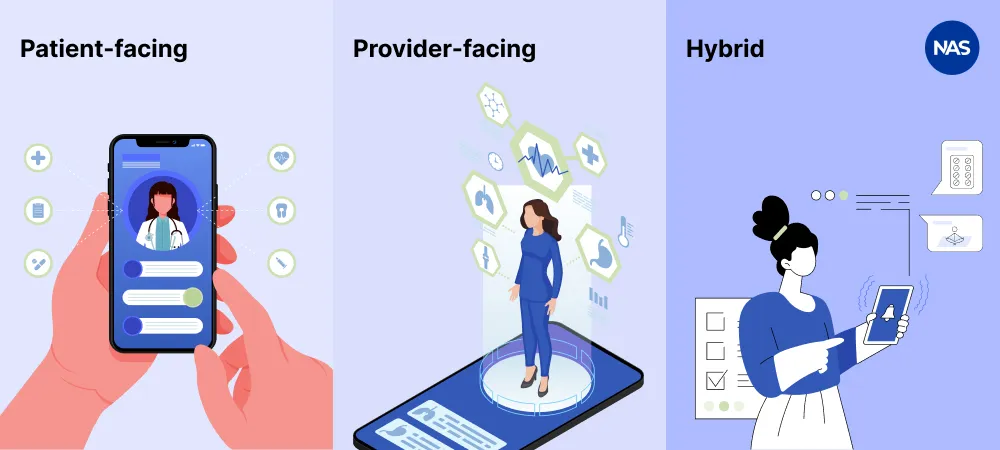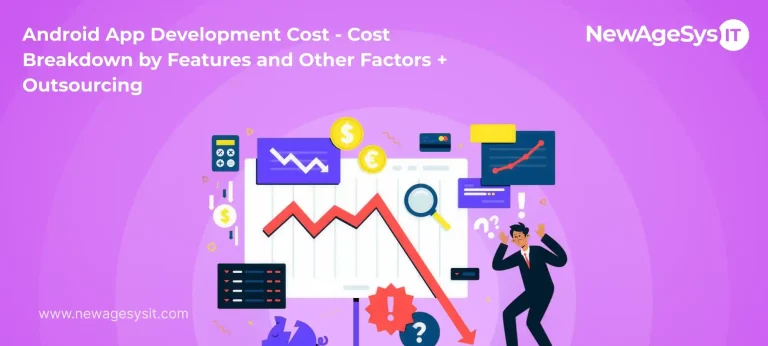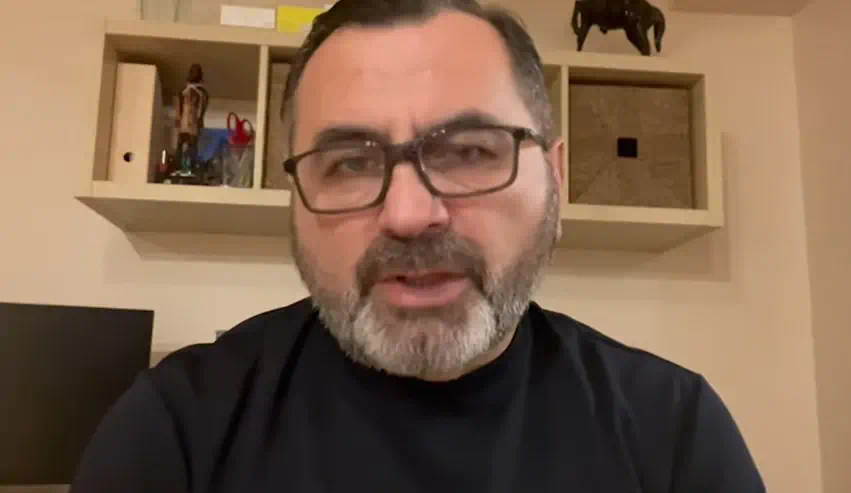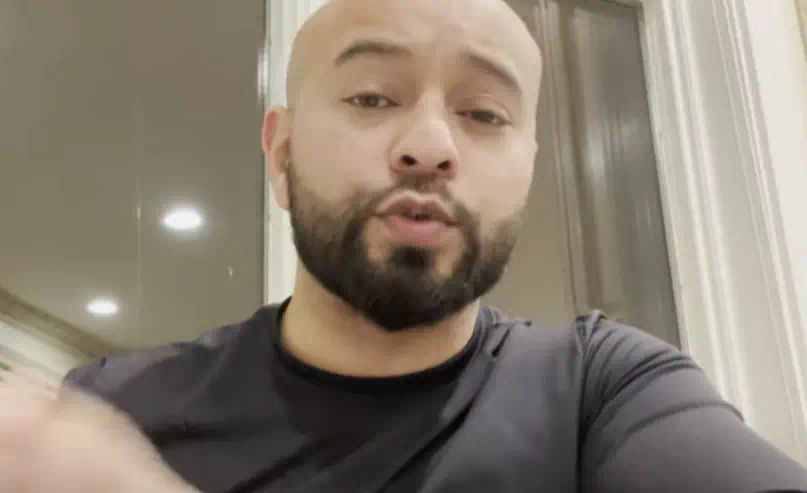| Key Takeaways: Healthcare brings major business opportunities in North America, with respect to gaps in rural access, chronic care, and personalization. Tech-based healthcare business models are dominating the healthcare business market. AI, IoT, and data-driven platforms are key drivers in innovation for platforms related to diagnostics, triage, staffing, etc. Barriers like compliance and certification are tough to crack but act as protective moats for startups. Healthcare startup failure majorly stems from non-tech issues, like poor product-market fit, lack of clinical validation, etc. |
The global healthcare market is expected to reach an economy of $9.25 trillion by the end of the year, with North America being a major part of this figure. The figure is way larger in comparison to multiple nations’ economies. So, it is quite natural of entrepreneurs to have an inclination towards the industry.
In fact, the U.S. healthcare market does offer ample opportunities. For example, the rising older adult population, growing mental health issues, chronic issues, unaddressed rural areas, etc. Based on these opportunities, we have consolidated a list of some great healthcare business ideas.
Each of these ideas can be turned into flourishing businesses. So, let’s begin assessing them, but before that, just stop a bit to understand healthcare business types.
Types of Healthcare Businesses – Dependent on IT Implementation
In essence, a healthcare business can be as simple as opening a clinic. However, as per our perspective, the target audience of this article, i.e., “you,” is most likely looking for software solution types for starting a healthcare business.
Well, if our belief is correct, then these solutions can be divided into three categories, which are: Patient-Facing Solutions, Provider-Facing Solutions, and Hybrid Solutions. Let’s explore:

🧍♂️ PATIENT-FACING SOLUTIONS
Primarily focuses on improving access, engagement, and experience of the patients:
- Appointment Booking & Doctor Discovery: These are platforms or apps that help patients find doctors based on specialty, ratings, location, and their insurance. Zocdoc is a prominent example in the U.S..
- Digital Health Records & History Locker: Personal health record (PHR) systems specifically developed for patients. They allow patients to store reports, prescriptions, and vitals securely. Common examples include platforms like Apple Health Records, HealthVault, etc.
- Remote Consultations/Telemedicine: Video/voice/text consultation platform delivering e-prescriptions and even follow-ups. Examples are Teladoc Health, Doxy.me.
- Chronic Disease Management Apps: Tools that are used for managing chronic issues like diabetes, hypertension, thyroid, etc., through logs, AI coaching, and reminders. Examples include MySugr, BlueStar, etc.
- Medication Adherence Tools: These are based on a simple idea of a pill reminder. They help track your medication, deliver alerts, provide refill reminders, and even log side effects. A few examples are Medisafe, MyTherapy, etc.
- Wellness & Preventive Health Platforms: Works on the integration of wellness apps with yoga, physiotherapy, healthy cooking, etc. Examples are Headspace, FitOn, etc.
🩺 PROVIDER-FACING SOLUTIONS
Focuses on streamlining workflows and improving care delivery for doctors, hospitals, and clinics.
- Practice Management Software: Software for clinics to manage appointments, billing, patient flow, and EMRs. Real-life examples include Cliniko, SimplePractice, etc.
- EHR/EMR Systems: These are lightweight, specialty-focused, and often mobile-first electronic health record systems. Some of its examples are Elation Health, eClinicalWorks, etc.
- Diagnostic Reporting & Lab Integration: It’s basically a lab information system (LIS) with EHR or cloud storage support. Examples are CrelioHealth, LabWare, etc.
- Remote Patient Monitoring (RPM) Tools: It is a range of tools that offer dashboards for providers, enabling them to track vitals (BP, ECG, glucose) remotely with the help of wearable or IoT devices. Common examples include Validic, Dexcom, HealthSnap, etc.
- Medical Billing & Revenue Cycle Management: Software for insurance claims, payment processing, and denial management. Examples are Kareo Billing, Waystar, etc.
- Clinical Decision Support Systems (CDSS): These are AI/ML-based diagnostic tools, treatment protocol assistants, or drug interaction checkers. Some of its examples are IBM Watson, VisualDX, etc.
🧑⚕️ HYBRID SOLUTIONS (For Both Patients & Providers)
As the name suggests, these solutions support both patients and providers alike. Here are a few types in terms of healthcare businesses:
- Hospital-Patient Communication Platforms: They comprise chatbots, in-app chat, or AI-based symptom triage systems. Examples of these applications include Ada Health, Babylon Health, etc.
- Home Healthcare Management: Platforms for at-home nursing, physiotherapy, palliative care booking, etc., come under this type. Examples are Portea, Homage, etc.
- Second Opinion & Medical Tourism Portals: These are software that match patients with global experts for second opinions or cross-border treatments. A few of its examples are MediGence, Taqtik Health, etc.
Benefits of Starting a Healthcare Business
Aside from the flourishing healthcare market, if one can get by the barriers to entry, there are imminent benefits in starting a healthcare business. Here are some of those benefits:
- High Market Demand: Healthcare is fundamental to everyone, be it an aging population or someone suffering from a chronic disease. And, with digital adoption, the demand will always remain consistent.
- Recurring Revenue Potential: With changing lifestyles, food habits, and stress taking center stage, services like consultations, diagnostics, treatment plans, etc., will generate repeat income.
- Social Impact: Solving real problems related to healthcare reaps high satisfaction. Why? Your services directly contribute to public health and wellness.
- Government & Insurance Support: Government is always trying to help scale healthcare services through policies, subsidies, and by increasing health insurance penetration.
- Scope for Innovation: Emerging tech like AI, IoT, telehealth, etc., is offering tremendous opportunities for digital disruption.
- Investor Interest: Considering the importance and recurring nature of healthcare services, VCs (Venture Capitalists) are interested in funding healthcare business opportunities.
- Regulatory Protection: Compliance in healthcare is a huge barrier. However, once crossed, it becomes a barrier for your competitors too, helping in protecting the niche.
Best Future Business Ideas for Healthcare – Based on Gaps and New Approaches!
The following healthcare business ideas are based on persistent gaps in the market. So, our list of ideas primarily centers around:
- Digital and physical access to care in underserved areas
- Chronic disease and senior care management
- AI and remote care scaling that addresses workforce shortages
- Personalization and data-driven patient engagement platforms
1. 💊Online Pharmacy
Market: Revenue expected to reach $27.67 billion in 2025.
Gap: Home delivery is limited to urban areas, + medication adherence support doesn’t provide personalized support for chronic issues.
Business Idea: Although it may feel saturated, an online pharmacy can still be the best healthcare business to start. Why? There is stil scope for disruption. The current market already has popular applications like Amazon Pharmacy, GoodRx Care, Capsule, etc. However, the majority of them don’t provide on three important fronts of an online pharmacy, i.e., e-prescriptions, AI-medication reminders, and on-demand virtual consultations as a single service.
These services lack in terms of providing deliveries to rural areas in the U.S.. And, there is still a lot of scope for improving medication adherence in terms of personalized service. In fact, a report states that around 125,000 deaths can be easily avoided with proper adherence, and an app that does so fills this gap.
2. 🧠🕶️VR/Metaverse Apps for Mental Health
Market: The U.S. Metaverse mental health market is valued at $691.16 million in 2025, and is expected to grow with a CAGR of 26.6%.
Gap: Poor access, high stigma, and lack of immersive, personalized therapy.
Business Idea: A company that combines AI+AR/VR+Metaverse might end up dominating the mental health space. Mental health issues are common in the U.S.. In fact, it was estimated that more than 15.4 million adults struggled with SMI (Serious Mental Illness) in 2022.
There are several platforms that use the power of AI and VR to provide mental health services. For example, Wysa, Psious, XRHealth, etc. However, no one has come up with the culmination mentioned earlier. Plus, if an AI healthcare startup or enterprise manages to build something incredible using the three technologies, they’ll be able to tackle issues like high stigma and lack of immersiveness. Additionally, features like AI-based mood tracking, anonymous support groups (similar to ones on Reddit), and immersive VR for anxiety or different phobias can be integrated.
3. 🤖💬AI Symptom Checker Apps
Market: The U.S. market of AI symptom checker apps is valued at $186.9 million in 2024. Potential of CAGR 14.3% globally till 2030.
Gap: Overcrowded ERs and delayed self-triage.
Business Idea: In a 2022 survey, it was revealed that the U.S. had a total of 155.4 million hospital visits, i.e., 47.3 visits per 100 users. Out of this, only 17.8 million resulted in hospital care, while 3.1 million ended up in the critical care unit. This means there is huge potential in developing an AI symptom checker that could provide frontline assessment through intelligent diagnosis. Apps like Ada Health, K Health, Healthily, etc., are already doing some good work in the area. However, there is still scope for a service that combines:
- AI triage + real-time doctor routing
- Chronic condition personalization
- Mental health triggers
4. 📞👨⚕️Telemedicine Platforms
Market: The market is expected to grow to $94.3 billion in the U.S. in 2025.
Gap: Rural and after-hours care shortages.
Business Idea: It can be one of the most challenging healthcare business ideas, but the requirement is real. Why is it challenging? There are apps that are trying to fill the gap, such as Amwell, PlushCare, Doctor on Demand, etc.. However, the majority of them are limited by reimbursement policies, cross-state licensure reform, broadband expansion, and hybrid care models.
The requirement is real because 20% of the U.S. population lives in rural areas, but only 10% doctors practice there. So, naturally, people have to travel long distances, the number of specialists is few, and urgent care services are limited.
Additionally, ER (Emergency Room) visit spikes because many PCPs and specialists don’t operate beyond 9-5. In fact, even urban users struggle to get treatment outside regular hours. So, here are a few features or healthcare startup ideas that can be culminated into one to create a winning service:
- 24/7 on-demand care for non-emergency issues such as fever, UTI, sore throat, etc.
- Services like post-discharge monitoring, medication adherence, virtual coaches for chronic diseases (diabetes, hypertension, etc.), etc.
- Pairing of RPM (Remote Patient Monitoring) with the app to reduce readmissions.
- On-demand virtual consultations for dermatologists, psychiatrists, endocrinologists, etc., in rural areas.
- Access to specialists nationwide.
5. 📲❤️Remote Patient Monitoring
Market: The global remote patient monitoring market size was estimated at $22.04 billion in 2024, with North America accounting for a 40.5% share.
Gap: Fragmented post-discharge care and late interventions.
Business Idea: Remote patient monitoring is already amongst well-established medical business ideas. However, there are several persistent issues that still exist, and as the market expands, will sooner or later be addressed by someone. You can seize the gap as the idea and create a service that takes up proper follow-up with patients with chronic conditions, avoiding 30-day readmission, poor medication adherence, etc. Plus, a service that detects problems before the symptoms escalate can help so many lives.
As for the service, today, we have multiple FDA-approved devices to monitor conditions like heart rate, blood pressure, SpO2, etc. Clinics can utilize this data for effective remote monitoring through your service. Also, integration of AI algorithms can even trigger alerts for any early sign of deterioration shown by the patient.
6. 🧑⚕️🧑💻Healthcare Staffing Marketplaces (Nurse/Doctor Uber)
Market: North America accounted $38.7 billion in revenue in 2024 for healthcare staffing.
Gap: Erratic staffing, burnout, and agency delays.
Business Idea: The U.S. as a nation struggles with staffing for nursing and healthcare worker burnout. In fact, in 2022, the U.S. Bureau of Labor Statistics projected a requirement of 275,000 nurses between 2020 and 2030. Additionally, this shortage can be attributed to burnout, with nearly 46% of healthcare workers reporting it in 2023.
This demands a service that frequently connects hospitals and clinics for last-minute staffing shortages with real-time, credential-matchmaking. Also, the service will allow nurses to choose a suitable schedule to work, avoiding consistent burnout with someone else taking their place when they can’t.
There are players in the market trying to bridge the gap; however, the true opportunity lies in filling issues that haven’t been addressed. For instance, specialty staffing, long-term continuity plans for nurses, burnout management, mental health support, etc.
7. 🧬⚕️Personalized Medicine Apps using Genetic Data
Market: North America made up 40.17% of the global revenue of $567.10 billion in 2024 through personalized medicine apps.
Gap: One-size-fits-all treatments and adverse reactions.
Business Idea: Personalized medicine apps are amongst the proven healthcare business ideas that are reaping huge numbers in global revenue. However, we have been made aware of the truth that there is no “One-Size-Fits-All” treatment for everyone. And, that is where the current players are lagging, and it is exactly the place to be one of the most innovative ideas for healthcare business, i.e., a combination of personalized medicine with genetic data.
ADRs or adverse drug reactions are already a leading cause of death in the U.S.. And, with the introduction of such service and factoring in genomic data, lifestyle, microbiome, and family history, better personalized medicine can be provided. Plus, there are remaining challenges like data privacy & ethical concerns with DNA storage, limited insurance coverage for genomic sequencing, and integration of genetics+EHRs+lifestyle that can be solved by you.
8. 🏡👩⚕️Home Health & Concierge Nursing
Market: The U.S. Concierge medicine market in 2024 was valued at $7.35 billion.
Gap: Aging population, skilled nursing shortages, hospital-to-home transition.
Business Idea: Older adults have already outnumbered children in more than 11 states and almost half of the U.S. population. As of 2025, the total number of older adults is close to 61.2 million. So, even if there are credible players in the market providing home health and concierge nursing, the growing population, nurse shortages, burnouts, etc., actually demand more players. In fact, there are many families in the nation that are willing to pay for credible service, proactive monitoring, and peace of mind.
9. 🥗📋Custom Meal Planning for Chronic Disease
Market: The global personalized nutrition market is set to reach $23.3 billion by 2027, with North America being the biggest player in its region.
Gap: Low adherence to generic diets and little doctor-patient integration.
Business Idea: It has been proven multiple times that you are what you eat. And, this healthcare startup business model reflects the idea to the core. So, while there are a few services like Noom, MyFitnessPal, etc., that help with a generic diet, they lack personalization and have no input from doctors.
In fact, people failing to stick to generic diets like keto, paleo, etc., is a largely discussed topic on the internet, and is present because of factors like metabolic differences, food sensitivities, and gut health.
An app that utilizes AI to analyze lab reports (e.g., glucose, thyroid, lipid profile), integrates doctors in the meal plan, understands users’ symptoms or history, and creates a plan based on real-time user data (weight, mood, etc.) can actually do wonders in the market. The app can also provide outcomes-based tracking through weekly dashboards, medication tapering alerts, and visualization of nutritional ROIs.
10. ✈️🏥Medical Tourism Coordination
Market: The U.S. medical tourism market was estimated to reach $8.74 billion in 2024.
Gap: Fragmented international logistics and lack of trust.
Business Idea: Healthcare in the U.S. is super-expensive. And, because of this, another market shot up, i.e., medical tourism. People residing in the U.S. travel to countries like India, Thailand, Mexico, etc., because of rising costs and setbacks like long wait times, affordable care, etc.
However, patients have to arrange flights, translators, accommodations, visas, etc., and there is no single platform that manages end-to-end care, which includes services like insurance, post-op rehab, and remote monitoring. Additionally, there is a real lack of trust as patients are unaware of the quality of services provided in these countries. And it creates skepticism around care quality, infection risks, and sometimes legal protection.
Starting a medical tourism coordination business through an app can currently be one in a million digital health business ideas. A secure platform that provides AI-verified hospitals+doctors, end-to-end bookings, digitized second opinions, translation, and integration with JCI-accredited hospitals and ISO-certified labs. Plus, upon scaling, you can start providing cross-border insurance bundles, emergency contingency plans, and a digital wallet for billing transparency.
11. 📱📈Digital Therapeutics (Chronic Diseases, Pain, Mental Health)
Market: The U.S. digital therapeutics market is estimated to reach $3.72 billion in 2025.
Gap: Gaps in evidence-based, at-home management.
Business Idea: Digital Therapeutics (DTx) are software that provide interventions to prevent, manage, or treat a disease. The market, as of now, may not seem like an enticing healthcare business to start. However, there are key drivers and gaps that make it a plausible place to invest time and money. Key drivers include a rise in chronic diseases, rising mental health awareness, shift to value-based care, etc.
Additionally, there are existing gaps left by the market incumbents, such as at-home chronic and mental conditions management, outcome tracking, personalization, poor comorbidity (two or more health conditions in the patient) support, poor EHR integration, etc.
Catering to this will soon become the best medical business to start. However, betting your skills to build something of this accord now can establish you as a key player, especially if you get the support of the FDA (Food and Drug Administration).
12. 🚐🔬Mobile Diagnostics Units
Market: Mobile imaging services made a revenue of $18.1 billion globally, with 39.3% revenue generated in North America in 2024.
Gap: Rural/senior patient travel burden, long waits for basic tests.
Business Idea: We have already discussed about the growing older adult population. And, healthcare startup ideas targeting this segment of the audience are bound to flourish if the execution is great.
Mobile diagnostics unit as an idea promises to solve a major issue for the elderly, i.e., mobility to get diagnosed for their existing issues.
A service combined with great logistics that offers on-site labs, imaging vans, and regular community rotations will make a tremendous positive change. Plus, these are adopters who are willing to pay for such a service. And, while urban areas are covered by several existing services, rural areas still remain highly underserved, making rural regions a plausible place to create a brand.
13. 🔗💻Medical Data Interoperability/Integration
Market: The healthcare interoperability market in the U.S. is projected to reach $1.32 billion in 2025.
Gap: Disconnected EHRs and incomplete patient histories.
Business Idea: While HIPAA has mandated protection, security, and explicit consent of patients to use PHIs (Personal Health Information), interoperability remains an existing barrier for effective usage. What happens is that most major hospitals and clinics use different EHR vendors. For example, Epic, Cerner, Allscripts, etc., and these services don’t talk to each other. So patient history largely remains incomplete.
Additionally, efforts like HL7 and FHIR have been made to standardize the use of data formats, but there is still a long way to go. These problems give way to several healthcare startup ideas, such as:
- Secure middleware solutions that act as plug-and-play tools to connect EHR systems. These tools can also act as a translator between different standards, i.e., HL7 ↔ FHIR.
- Developer-friendly open API ecosystems that provide easy push/pull of health data from digital health tools (apps, wearables, labs).
- Real-time interoperability platforms that enable instantaneous updates across stakeholders for chronic or acute care.
14. 💬👩⚕️Healthcare Chatbots (AI Virtual Assistants)
Market: The global healthcare chatbot market was estimated at $1.202 billion in 2024, and will be growing with a CAGR of 24% till 2030. Also, North America was again the largest contributor.
Gap: Inaccessible guidance, long call center waits.
Business Idea: The influx of patients in the U.S. healthcare system is already high. And, with the advent of AI technologies like GenAI, it is now possible to create healthcare chatbots that can do the heavy lifting in terms of medical guidance.
Currently, there are several problems in the existing system, such as:
- Long waiting times for call centers and even basic queries, such as appointment booking
- Patients have to interact with different siloes for billing, scheduling, and care
- Bots utilize basic NLP (natural language processing)
- Many bots are not synced with EMRs or clinical workflows
A well-developed AI chatbot can handle all the basic inquiries, deliver AI-based triage, self-care advice, provide medication and appointment reminders, offer mental health support, etc. There are services in the market, but an effective culmination of the aforementioned can actually disrupt and become the next best future business ideas for healthcare.
15. 😌🧘♂️Mental Health Chatbot Service
Market: The global market for mental health chatbots is expected to reach $1.77 billion in 2025, with North America as the largest player.
Gap: Limited therapist access, stigma, and affordability.
Business Idea: Currently, there are services like Woebot, Wysa, Replika, Tess, etc. that are operating in the market. However, each of these caters to different medical business ideas that fall under the niche of mental health chatbots. But, there is still room.
With rising anxiety, depression, and loneliness rates, there are gaps in the market that are still unaddressed. For instance, shortage of therapists, long waitlists, expensive sessions, high patient drop-off from digital services, etc. However, it is a problem that can be solved.
A chatbot that makes use of AI and provides a combination of multilingual support, CBT+emotion regulation+grounding toolkit, integration with telepathy platforms, gamification, community integration, etc., can solve the earlier-mentioned problems. A new entrant can win simply by focusing on empathy-driven, emotional continuity, inclusive, and clinically validated service.
16. ⌚📦Subscription Wearable Monitoring
Market: The global wearable market was estimated at $84.2 billion in 2024, with North America sharing 34% of the market.
Gap: Poor continuity for heart, diabetes, and elderly cases post-visit.
Business Idea: All of us have either used smartwatches and fitness bands by now, or at least know about them. However, while they seem like a great solution to learn about your body stats, they lack in many ways. Here are a few gaps left by them:
- Not supported by a clinical dashboard and doesn’t provide reimbursement under RPM codes
- Not approved by the FDA and have poor clinical engagement
- Limited to offerings related to fitness/sports analytics
So, a monthly or quarterly subscription that provides the following can act as one of the profitable healthcare business opportunities:
- Wearables with clearance from the FDA
- Secure and continuous vital data with clinical support and a virtual care team
- Real-time alerts for any abnormal trends
- Automated nudges, check-ins, or educational messages
- Tiered offerings based on risk patterns
17. 🔍👨⚕️Online Medical Consultancy/Second Opinion
Market: The medical second opinion market had a valuation of $6.2 billion in 2023 and is growing with a CAGR of 15.3%. North America dominated this global market share with 45% of its own.
Gap: Slow specialist referrals, rural specialty care.
Business Idea: Medical aid is reliant on diagnosis and prognosis. So, sometimes the chances of a doctor providing intermittent care for a persistent issue can be faulty. This is the reason the market for second opinions is slowly increasing. However, there are issues, such as:
- In traditional systems, getting a second opinion can take weeks, especially in rural areas
- In many rural areas of the U.S., specialists aren’t available
- Patient records are often not shared seamlessly across institutions
So, a service that works on providing rapid virtual second opinions within 24-72 hours can become a great business. A direct-to-consumer second opinion can be a wonderful idea, especially with services like AI-assistance, seamless record integration, global access, and a specialist marketplace.
18. 🏢💪Corporate Wellness & Digital Screening
Market: The U.S. corporate wellness market is valued at $16.07 billion in 2025, and will be growing with a CAGR of 9.4% till 2032.
Gap: Lost productivity, difficult risk assessment, and disconnected health initiatives.
Business Idea: With the fast-paced lifestyle, bad eating habits, and sleep deprivation, chronic issues have become a persistent problem for people working in corporates. So, many corporations look for solutions to mitigate this. In fact, a survey reveals that stress has led employees to lose 7 hours of productivity in a week, leading to employer losses of $183 billion in 2024.
What can be done? Well, a service that helps corporations help their employees, and provides the following services:
- Recognition of early symptoms in employees to take preventive care
- Integration of a dynamic risk tracking system that factors in issues like burnout, poor sleep, inactivity, and poor diet
- A unified dashboard for employers or HRs in the workplace to track outcomes or ROI
How can this be developed into one of the most exciting medical business ideas? Well, here are the following suggestions:
- An app-based health risk screening platform that assesses mental, physical, and behavioral health digitally
- Real-time coaching and nudges with the help of AI that include mental wellness check-ins, habit tracking, and stress relief exercises
- Gamified wellness programs with leaderboards and incentives to complete goals like step counts, meditation streaks, or screening completions
- An employer analytics dashboard that views population health risks, wellness ROI, engagement trends, and provides real-time data
19. 👵📊Wearable Predictive Analytics for the Elderly
Market: The Consolidated healthcare and wearable technology devices market was valued at $17.5 billion in 2024. Also, North America dominated the market in 2023 by contributing 40% of the total market revenue.
Gap: Falls, dehydration, and hospitalizations among at-home seniors.
Business Idea: There are so many great healthcare startup ideas that can be realized, keeping the elderly in mind. The core of this business idea revolves around the aging population, the rise in home care, and the cost pressures associated with long-term care.
Older adults often have a higher risk of home emergencies that can involve falls, strokes, dehydration, or any medication mismanagement. Currently, there is no clear system that allows the family or the caregivers to avoid them and be 24*7 present. There is a clear lack of insights in the existing wearables market that doesn’t predict events like falls or irregularity with contextual monitoring.
However, with the present AI-based technologies, it is possible to create a predictive model that can be integrated into a smartwatch. This model can use machine learning to learn about movement, biometrics, sleep, hydration, voice, etc., and notify the caregivers in times of anomaly 24*7.
The system can utilize an elderly-friendly UX with large fonts, vibration feedback, simple design, etc. And, it can be launched as a subscription-based health intelligence platform that provides family and clinicians with trends, alerts, and even actionables.
How to Start a Healthcare Business? – General Steps
By analyzing the different healthcare business opportunities above, you may have a basic idea that healthcare business ideas differ a lot and the same can be said for their implementations. So, to provide a basic blueprint, we have provided generic steps that you can follow to start a medical business:
1. Identify the Niche
There are tons of the best future business ideas for healthcare with different focuses, such as telemedicine, diagnostics, healthtech, senior, etc.. Choose your focus, and validate the gap your idea is catering to.
2. Market Research
Start by analyzing your competitors, assessing customer needs, and the regulations that you need to follow. Try to understand the gaps that are left by your closest competitors. For this, you can study the trends they follow, pricing models, and the demographics of their target audience.
3. Create a Business Plan
Now start defining the services/products you will be delivering to the customers. Based on this, create plans for operations, marketing, and revenue model. If possible, include creating your funding plan along with projections in this phase.
4. Legal Structure & Registration
Select a legal structure for your company, i.e., sole proprietorship, LLP, Pvt Ltd, etc. And, register your business and get all the required licenses (e.g., CLIA, HIPAA, NABL, etc.).
5. Compliance & Certifications
Fulfill all the requirements of compliance. If you are starting a software-based business that involves PHIs, then you need to get compliant as per HIPAA. Also, depending on your product/service, get certified for all the relevant compliances based on your region of operation.
6. Secure Funding
To realize business ideas in the healthcare industry, an entrepreneur has several routes of funding. These are self-funding, applying for grants, or approaching an angel investor/VC.
For self-funding, entrepreneurs either use their own savings or ask their peers and family for capital. However, if the capital required is huge, self-funding often doesn’t work. So, below are some options for grants and angel investors/VC in the U.S..
Grants for Medical Businesses in the U.S.:
- NIH SBIR/STTR Programs (Immediate funding of $150K to $1M based on scope)
- NIH Commercialization Readiness (SBI; supports transition from R&D to commercialization)
- American Nurses Foundation Innovation Fund (Grants up to $100k for nurse-led projects)
- USDA Rural Business Development Grants (To establish medical businesses in rural areas)
- Therapeutic Discovery Project (Tax Credit/Grant; For small therapeutic or diagnostic projects)
Angel Investors/VC Options for Healthcare Businesses in the U.S.:
- Andreessen Horowitz (VC Firm)
- Venrock (VC Firm)
- Sequoia Capital (Angel/VC Firm)
- RRE Ventures (Angel/VC Firm)
7. Build a Medical Team or Tech Stack
To build a medical development team, you can go several routes, such as in-house, outsourcing, or nearshoring. Each of these development options has its own pros and cons that you can learn about. If we talk about ourselves, we are a nearshoring company that delivers the advantage of an offshoring company, i.e., affordable pricing.
How are we able to do it? Well, we are U.S.-based but have established multiple offshore development centers, enabling us to deliver you incredible pricing of $25-$49 per hour, depending upon the complexity and expertise required. Plus, we have a development experience of 25+ years that includes working in the healthcare domain.
We can also talk about the tech stack. However, the spectrum of medical business ideas is super-wide, and different products/services require a different set of tech stack. So, talking to your team or a company specializing in healthcare software development services would be the best route to understand that.
8. Choose Tech & Infrastructure
For app or website assistance, you can ask for help from your development partner. However, there can be other sides to developing different healthcare startup ideas. So, if the requirement demands setting up a clinic, a lab, or any other requirement, you have to conduct research independently or hire a consultant with relevant knowledge.
9. Launch & Market
Launch your product/service. However, we’ll recommend that you do it locally or run a pilot. This will help you nitpick bugs and issues with your project. Also, start working on digital marketing, creating a doctor network, B2B partnerships, etc., at this stage.
10. Monitor, Improve & Scale
Gather patient/user feedback, and start optimizing your service based on it. Once you have a holistic idea of everything, start expanding your reach to different regions.
End Note!
Becoming a part of the healthcare industry is considerably complex. It requires tonnes of market knowledge and understanding of compliances and regulations, before a product is launched. However, it is also highly profitable for entrepreneurs who understand the pulse of their audience and fill that gap. With this article on “Healthcare Business Ideas,” our aim was to share some plausible areas where you can expand your efforts. You can start working on this as it is, or get inspired to create something better. Initiative would be our win.
Also, on an end-note, we would like to say that creating a healthcare service will require a lot of hardwork from your side. However, if you are looking for assistance in terms of software/app/website development then we are more than willing to help. So, if you feel that our article was of any help, we’d recommend you to try out developers too.
FAQs:
Q.1 How to start a medical business with minimum capital?
To start a healthcare business with minimum capital, you need to cater to an idea with low-overhead costs. A few cost-effective medical business ideas could be:
- Telemedicine services (Chronic care, second opinions)
- Medical content/blogs/YouTube
- Medical equipment resale/rental
- Medical tourism coordination
Q.2 What is the most profitable medical business?
Putting a finger on a healthcare business idea, and saying that it is the most profitable is not possible. What’s possible is sharing medical business ideas for entrepreneurs that have high average margins. Here are a few:
| Medical Business | Why It’s Profitable | Avg. Margin |
|---|---|---|
| Telemedicine | Low overhead, growing demand, scalable nationwide | 50–70% |
| Medical Billing & Coding Services | Recurring revenue, B2B model, minimal staff | 45–65% |
| Concierge Medicine / Direct Primary Care | High subscription fees, limited patients, fewer insurance hassles | 50–60% |
| Health SaaS Platforms (EHR, scheduling, etc.) | Subscription-based, scalable | 60–80% |
| Medical Equipment Rental | One-time purchase, long-term leasing | 40–60% |
| Mental Health Services (in-person or app) | High demand, especially post-COVID | 40–65% |
Q.3 How are enterprises using AI to build new healthcare business models?
Here are a few ways enterprises are using AI to build new healthcare business models:
- Predictive and preventive care
- Personalized and precision medicine
- Virtual care and AI triage
- Mental health through AI
- AI-augmented diagnostics
- Global and remote accessibility
- Health data marketplaces
- AI clinical research platforms
Q.4 Are there healthcare startup ideas that cater to daily health?
Yes, there are several. To name a few:
- Daily preventive health companion apps
- Customized supplement subscriptions
- Voice-first health monitoring for the elderly
- Workplace health coach
- Preventive healthcare-as-a-service
Q.5 Are there healthcare entrepreneurship ideas that can run from home?
Yes, there are multiple healthcare entrepreneurship ideas that can be run from home, such as:
- Health content and education platform
- Telehealth support services
- Curated health boxes (D2C)
- Remote health coaching
- Remote second opinion
Q.6 What are some of the most popular IT companies in the healthcare domain in the U.S.?
A few popular names in the IT healthcare domain are:
- Epic Systems
- Cerner Corporation
- Optum
- Health Catalyst
- Teladoc Health
Q.7 List out some unique medical business ideas for entrepreneurs?
As of now, it is hard for your fingers to find something unique. However, to be unique,u can solve an unaddressed gap or a gap in the existing niche. A few existing niches where you can find a gap are:
- AI-powered system checker and triage platform
- At-home diagnostic testing kits
- Virtual chronic disease management service
Q.8 How much investment is required to start a healthcare business?
The type of investment required largely depends on your healthcare idea. So, if you think of starting a home-based business, it can range from $5000-$25,000. And, for a startup, the upfront cost should start from $100,000.
Q.9 How long does it take to build a profitable business in healthcare?
For most successful startups in the healthcare domain, it typically took 2 to 5 years to become profitable.
Q.10 What is the success rate of startups in the healthcare domain?
As per NIH, 90% of the startups in the healthcare domain fail in the long run. Here are a few reasons behind failure:
- Lack of product-market fit
- Regulatory and compliance challenges
- Long sales cycles
- Poor business model
- Limited clinical validation, etc.





















